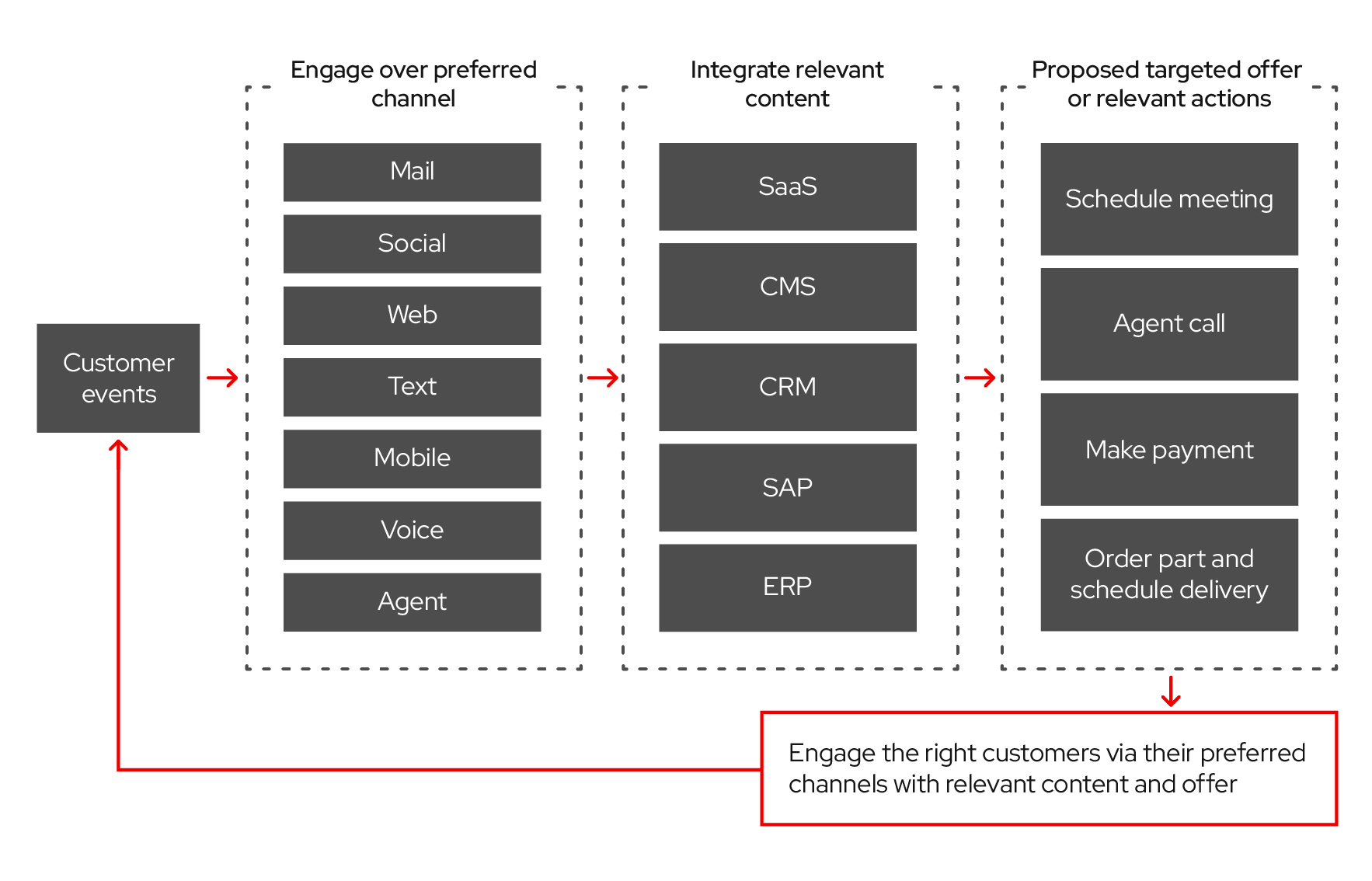Modernizing your company’s customer experience
Improving customer experience (CX) has always been a priority for companies. However, today’s unprecedented times have pushed customer engagement and retention to the top of trending industry topics. Now businesses seek to build value in every customer touchpoint with personalized experiences across e-commerce, customer marketing, service, and supply chain.
At the heart of these efforts are streaming data and artificial intelligence (AI) models that react to events in real time—while fine-tuning each customer experience for every interaction with the organization. To be effective, these technical capabilities should be developed into a customer engagement framework based on the unique needs of each business, rather than as a "one-size-fits-all" solution.
The world has changed. Your business must too.
Many businesses currently use CX solutions that cannot deliver the personalized service their customers increasingly demand. Meeting these expectations for engaging, personalized service in every encounter requires a holistic and integrated technical framework that keeps pace with changing needs and incorporates new technologies. Red Hat’s modern, open source technology allows this flexibility and paves the way for continuous innovation in customer engagement.
Right offer. Right time. Right channel.
Research shows that CX is becoming even more important than product and program innovation and is the primary way to differentiate your organization’s brand. [1] However, the ability to reach customers with the right offer at the right time in the right channel can’t be purchased in an off-the-shelf product. It requires a solution customized for each organization’s unique business needs.
This means that modernizing your organization’s CX involves enhancing your business intelligence by integrating real-time data, streaming analytics, AI, and machine learning with the ability to react to events in near-real-time through event-driven architecture to personalize customer engagement.
Customized technology built for your business goals
While approaches to CX vary by industry, Red Hat meets you where you are on the journey to modernize your customer engagement. We help organizations build solutions that integrate with legacy systems and respond to the dynamic nature of today’s marketplace, changing customer demands, and the need to incorporate new technologies.
Multi-industry
Learn about innovative CX solutions in 6 key industries
Optimize your customer experience the open source way
The flexibility and scalability that comes with an open architecture allows you to unlock value from data to personalize and simplify every user interaction with intelligent, dynamic experiences that support business goals and optimize customer retention.
Open source technology lays a foundation for innovation, integration, automation, and intelligence capabilities that provide an omnichannel experience which can extend compelling, relevant offers to customers at their point of need—all using a containers and microservices approach for flexible and scalable Open Hybrid Cloud deployment.
While some businesses seek technology that integrates with proprietary customer experience models, others want to build a solution that can be used to continuously innovate and avoid vendor lock-in. Either way, Red Hat meets you where you are in the journey to customize an open source solution that quickly deploys capabilities to respond to real-time data, events, and customer expectations.
Key resources
Webinar
Analyst report
Article
Video
Continue learning
Digital transformation is about integrating new technology into existing infrastructure, but it doesn’t happen with technology alone. It requires adjustments in processes too, because it doesn’t matter how efficient your infrastructure is if old bottlenecks still slow you down.
What is an event? How does event-driven architecture (EDA) differ from traditional request-driven systems? What are some event-driven architecture models? Learn more about how EDA works and the benefits of event-driven architecture as a technical framework.


